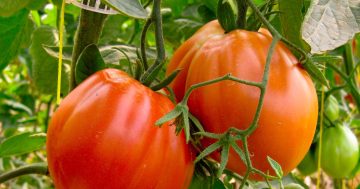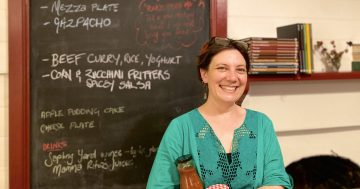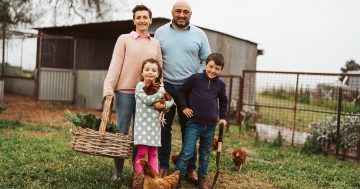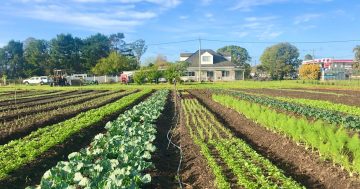
Many consumers are buying local produce, but what about restaurants? Photo: Capital Region Farmers Markets.
Look at just about any trendy cafe or restaurant and you’ll see a reference to local produce. But what does that actually mean? Is anyone enforcing whether it’s actually true? And why does it matter?
‘Local’ has become a buzzword in the hospitality industry, but in reality there’s no formal definition for what it really means. When the meaning of ‘local’ could be anything from ‘this tomato was grown 5 km away’ to ‘this tomato was grown somewhere in Australia’, it’s difficult for consumers to know exactly how local their food really is. And not everyone will have the same ideas about exactly how far it is acceptable to go to source ingredients.
In the discussion paper for the ACT Government’s Food and Fibre Strategy, it estimates that 90 per cent of the fresh leaves and berries consumed in the capital are trucked from Sydney. The reality is that, currently, the capital region does not feed itself. But the transition towards a more robust local food system will need to involve the hospitality industry committing to supporting local producers beyond lip service.
Moving fresh produce interstate increases the carbon footprint of what we eat through transport emissions, the energy used for longer cold storage, and after all that customers receive an older product that will spoil faster, leading to more food waste. Choosing food grown closer to home is key in making sustainable choices to reduce emissions and cut down on how much food we throw away while increasing the resilience of our local food economy.
Many consumers are actively seeking out those sustainable options and want to support businesses doing the same. But it can be difficult for customers to make informed decisions about the carbon footprint of their food when there’s a lack of transparency around the issue.
So here are a few things people can do to cut through the confusion.

Local farm Prana sell their produce through local CSA-style schemes, farmers’ markets and directly to consumers. Photo: Prana Produce.
Restaurants and cafes understand that sustainability is a desirable trait so if they are actually taking the time to source produce from our ‘local’ region, they probably want to capitalise on that. Look out for the names of specific producers listed on the menu, which indicates that the restaurant has a direct relationship with them. It also gives you the opportunity to look up where they are located and what kind of farming practices they employ.
Social media can be an ally here, as it generally offers a broader glimpse of what’s going on behind the scenes. Has the restaurant tagged a local producer in their photos? Maybe they’ve shared more details about other sustainability practices in their business. A lack of social media content doesn’t necessarily mean a venue is greenwashing its menu, but it can be a good place to start looking for answers.

Garlic scape powder and perfect bulbs of locally grown garlic at Southern Harvest Farmers’ Market in Bungendore. Photo: Michelle Rowe.
The seasonality of ingredients on the menu can also be an indication of whether they are local, and Canberra has fairly distinct seasons that support different kinds of fresh fruits and vegetables throughout the year. In summertime, you can expect to see tomatoes, corn and zucchinis galore, but these ingredients will not thrive during a Canberra winter so that’s when you can look forward to hearty vegetables like brassicas and root vegetables.
Rather than seeing this as a flaw, more chefs are beginning to appreciate the benefits of cooking seasonally. Many ingredients actually benefit from our cold climate because their frost-resistant qualities result in a molecular transition that makes them sweeter and more appealing after a cold snap. Kale has an ill-deserved reputation for being bitter because it’s so often harvested out of season, but frost-sweetened kale picked in June or July is delicious.
At the end of the day, if anyone can put the words’ local’ or ‘sustainable’ on a menu with no oversight, then the only people restaurants are really accountable to are their customers. So if you want to know where that tomato came from, the onus is still on the customer to do the research for themselves.





















